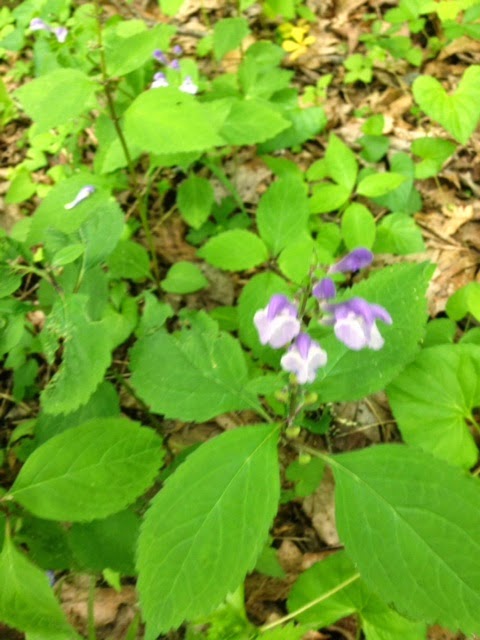On July 5, I revisited this area and found another color variation that I have added pictures of at the end of this post
Today was another great day. After reading these two great blogs from Jim Fowler:
Native Orchids at Mt. Mitchell State Park and along the Blue Ridge Parkway, North Carolina 2014-06-25
Looking for orchids and wildflowers in the Foothills and Mountains of the Carolinas — 2014-06-07
 |
| #326 - Appalachian Twayblade |
I decided to spend the evening crashing around in a West Virginia Rhododendron hell. Click on the link to learn a little more about these 'hells' but suffice it to say that the name is well earned. Jim Fowler observed in his posts that he thinks that Appalachian Twayblade is much more common than many believe. Even though it is not reported in Raleigh County, West Virginia, I knew some prime examples of where he suggests it may be found.
So, off to a logging road a couple miles from home that is an experience itself. I parked and walked down a hill and entered the 'hell'.
This picture to the right is from above; below this is a creek and where I was crawling, falling, stumbling and searching for twayblades. Not long after entering, I stumbled on my first ever Appalachian Twayblade, also know as Kidney Leaved Twayblade. Photographing it is a challenge in the gloom and having rained the night before, everything was dripping and muddy. In fact, when I arrived home, scratched, muddy and wet , I tried to blame it on Jim Fowler. Didn't help......

After crawling over and under these Rhododendron, I found two more small populations of Twayblade.
One still had closed buds.
In the dead center of the picture on the left is the first Twayblade I found and shows how it is hid by the Rhododendron
This is my second new Orchid this week.
I am enjoying June.
Thanks Again Jim Fowler.
More pictures below

I revisited this area on July 5, eight days after originally finding the Twayblades. I earlier checked two other parts of Raleigh County where I thought I may find the right conditions with no luck.
Today, I found plants that were much lighter and greener than those from before. One thing that I noticed is that the largrer plants were in spots where a little more direct sunlight was able to hit the ground. But, I also found an area deep in the Rhododendron, that was a small clearing (10 square feet). It had Trillium plants but the Twayblade shunned the more open area.
Below are the greener plants
 |
| There were many baby Twayblades |













































